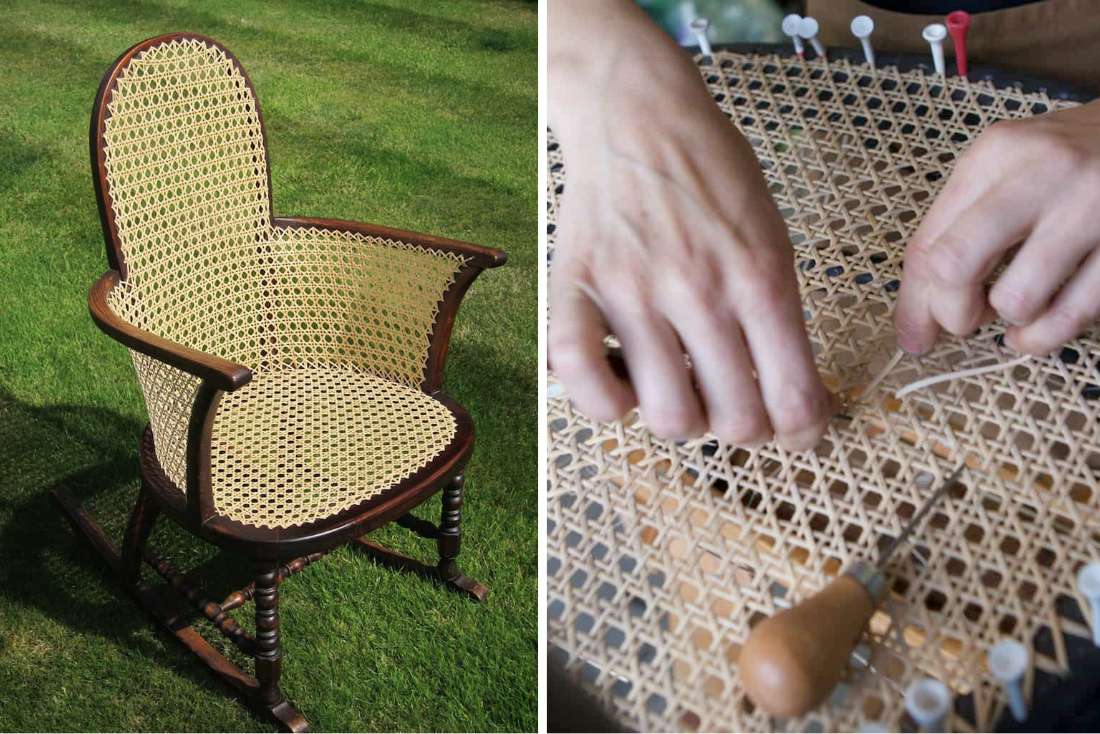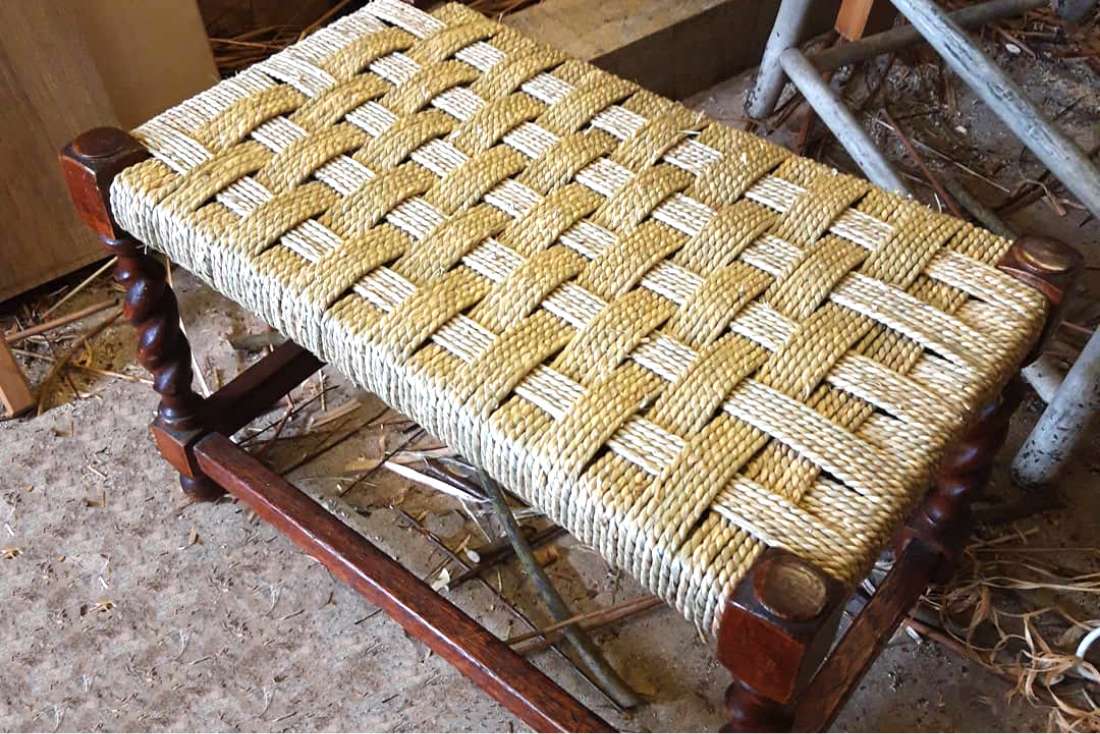The most common materials used for chair seating are rush and cane, although, as with basketmaking, chair seats developed according to what material was readily available in the local vicinity.
Evidence unearthed in Ur in modern day Southern Iraq shows that rush has been used since the 4th millennium BCE. Cane seated chairs are a more recent development, appearing in England during the reign of Charles II in the late 17th century.

Rushes grow worldwide. In the United Kingdom the freshwater rush, schoenoplectus lacustis, is used for chair seating. Cane comes from the hard, shiny inner bark of the rattan or cane palm, asalan rattan, a climbing vine, which grows in the rain forests of Southeast Asia, in particular Indonesia.
Other materials used in chair seating include seagrass, straw, whole or skeined willow, paper or Danish cord. Synthetic materials are also used.

Chair seating in the United Kingdom primarily involves the restoration and reseating of existing chairs. However, there is an increasing number of practitioners who are creating new and exciting pieces using traditional techniques and materials, as well as experimenting with new materials.


